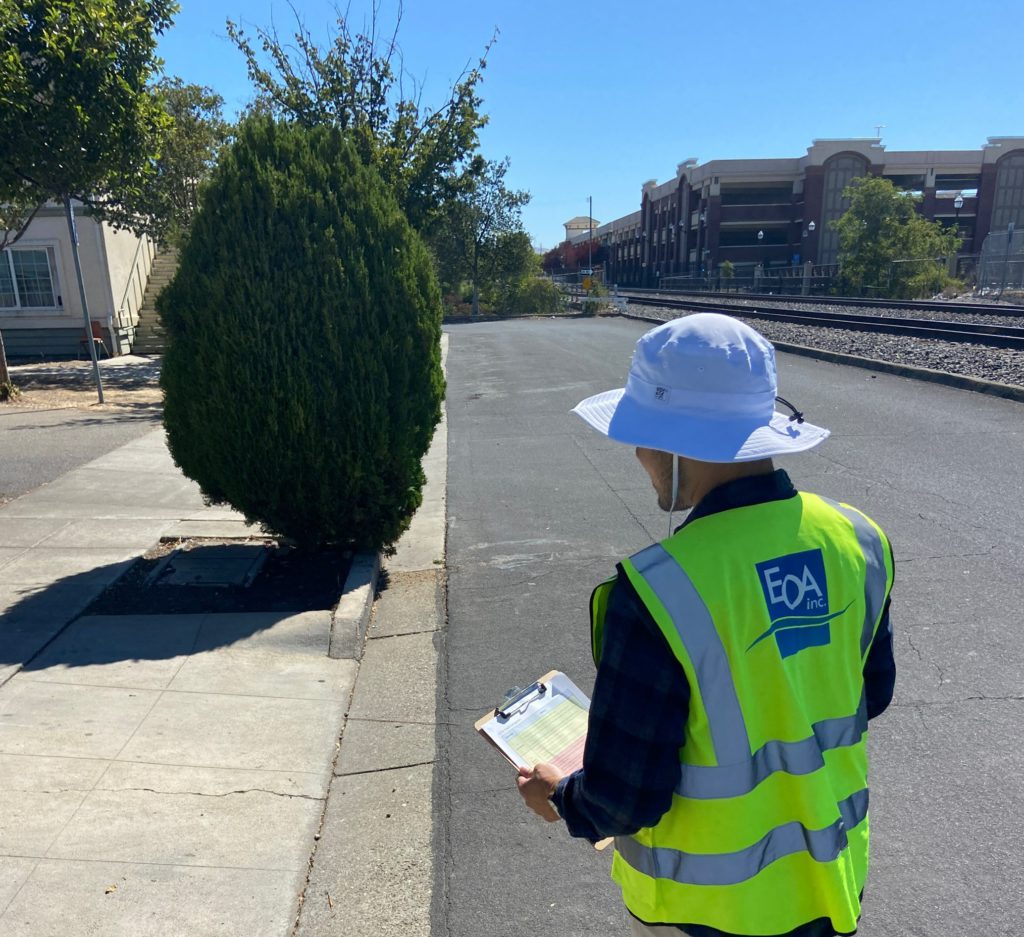
Assessing Changes in Trash Levels Over Time
On-land Visual Trash Assessment (OVTA) protocols involve the following general steps for specified land areas with established baseline trash levels:
1. Schedule each OVTA so that it falls roughly half-way between reoccurring control measures (e.g., street sweeping) and does not follow a significant rainfall event (> 0.5 inches of rainfall occurring within 24-hour period before the assessment).
2. Gather OVTA supplies and review trash condition category definitions (see Protocols for specific preparations, including site maps and tools for data collection).
3. Visit each OVTA site and observe trash deposited in each assessment area using the appropriate protocol. Determine the score.
4. Record the OVTA score and other relevant notes for each site.
5. Enter Records in the OVTA Data Portal.
When to use each OVTA Protocol
Use Protocol A (Walking) if the site is associated with streets/sidewalks and has safe pedestrian access. Walk at a normal pace on the sidewalk along the assessment site. Team members should discuss their observations as they walk.
Use Protocol B (Driving) if the site is associated with streets/sidewalks but does not have safe or available pedestrian access (e.g., highways).
Use Protocol C (Area-Based) if the area of interest is not associated with the adjacent roadway or sidewalk (e.g., parking lots).
Resources
OVTA Example Videos
Score A – Example 1, Example 2, Example 3, Example 4
Score B – Example 1, Example 2, Example 3, Example 4
Score C- Example 1, Example 2, Example 3, Example 4
Score D – Example 1, Example 2, Example 3, Example 4
Level B – Slightly Littered
Level C – Littered
Level D – Very Littered